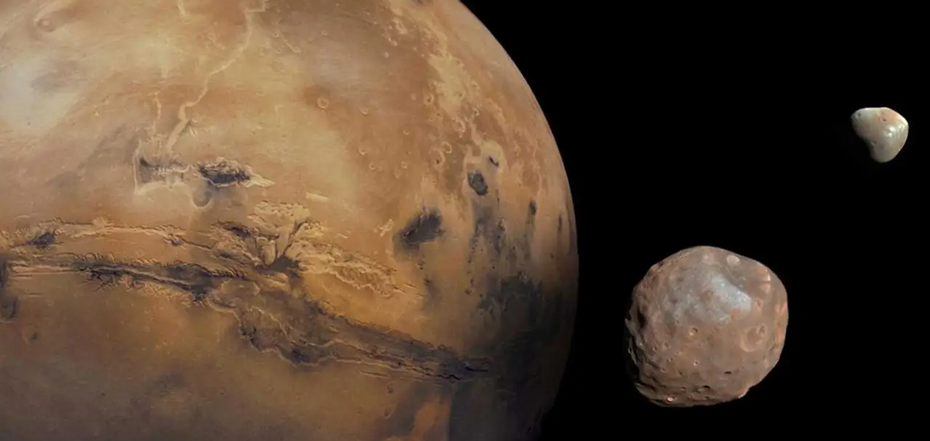News
Scientists voiced an "explosive" theory for the appearance of mysterious Martian satellites
The mysterious satellites of Mars, Phobos and Deimos, were probably formed as a result of the collision of the Red Planet with an unknown icy object. Such a space "accident" led to the formation of a ring of debris in Mars' orbit, which later formed two space bodies.
This is stated in a study by scientists from the Tokyo Institute of Technology in Japan. Previously, the contradictory properties of the Martian satellites puzzled researchers.
A preliminary analysis of the geological composition of Phobos and Deimos led scientists to believe that both objects were captured asteroids as their composition contained signs of water and was more similar to asteroids than to Mars.
However, the circular orbits of these satellites denied this theory.
Then a new theory suggested that Phobos and Deimos were formed when an unknown large rocky object collided with Mars. According to this theory, the collision resulted in material being blown off the Red Planet, which, together with the object's debris, formed a disk of debris that later merged into two satellites.
But, as New Scientist writes, this version also had a flaw: if the satellites had formed in this way, the material from which they were "built" would have heated up so much that it would have evaporated any water and melted most of the asteroid-like material found on the surfaces of the satellites.
Thus, a theory was needed that would fit both scenarios, and a scientists of the Tokyo Institute of Technology and her colleagues found it.
During the study, they simulated a collision between Mars and a large icy object. The advantage of this theory is that some of the ice evaporated during the collision and also absorbed heat, so the disk that formed in Mars' orbit was heated to only hundreds of degrees, not thousands. This allowed some water to remain in the debris.
In addition, the simulated collision showed that the disk formed after such a collision consisted of 80% of the material of the icy object and only 20% of the material of Mars.
The scientist noted that this could explain why the composition of Phobos and Deimos is so different from that of Mars.
This theory, however, also has a weakness. If the object that collided with Mars was very large, there would be a lot of water left on the surface of the Red Planet. Therefore, scientists assume that it was an object the size of the asteroid Vesta, one of the largest objects in the asteroid belt, with an average diameter of 525 km.
Subscribe to OBOZ.UA channels on Telegram and Viber to keep up with the latest events.



























